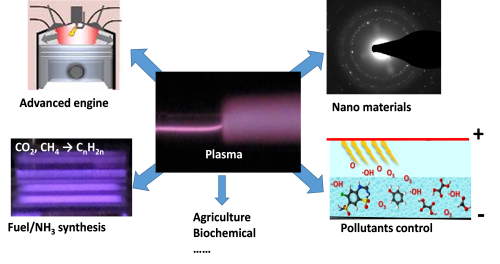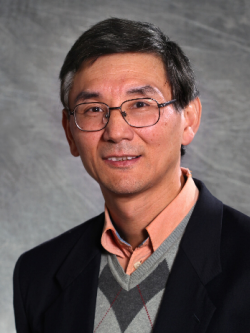Event Date/Time
Location
Maeder Hall, Room 002
Series/Event Type
|
Fig.1 Plasma assisted low carbon energy conversion and chemical manufacturing |
With the rapid increase of renewable electricity and electrical transportation, in the next a few decades fossil fuel based energy will be transformed into electron energy for a low or zero carbon energy world. Non-equilibrium plasma provide a promising solution to the challenges of large intermittency of renewable electricity, the lack of gigawatt scale of electricity storage, and carbon emissions from fossil fuels by using plasma aided green chemical manufacturing and energy conversion. In this lecture, at first, we will present the principles of plasma aided ultra-lean and low temperature combustion. The impact of plasma discharge on flame stabilization, minimum ignition energy, and cool flame formation will be introduced. Then, the impact of combustion chemistry on plasma dynamics will be discussed and a newly developed plasma chemistry instability theory will be introduced. The opportunities to control plasma discharge using chemistry instability theory for applications in advanced engines and chemical manufacturing will be presented. After that, recent progress in laser diagnostics for non-equilibrium plasma and the development of experimentally validated plasma chemistry models will be summarized. Finally, opportunities of plasma aided low carbon chemical manufacturing will be discussed.

Fig.1 Plasma assisted low carbon energy conversion and chemical manufacturing
Speaker Bio
